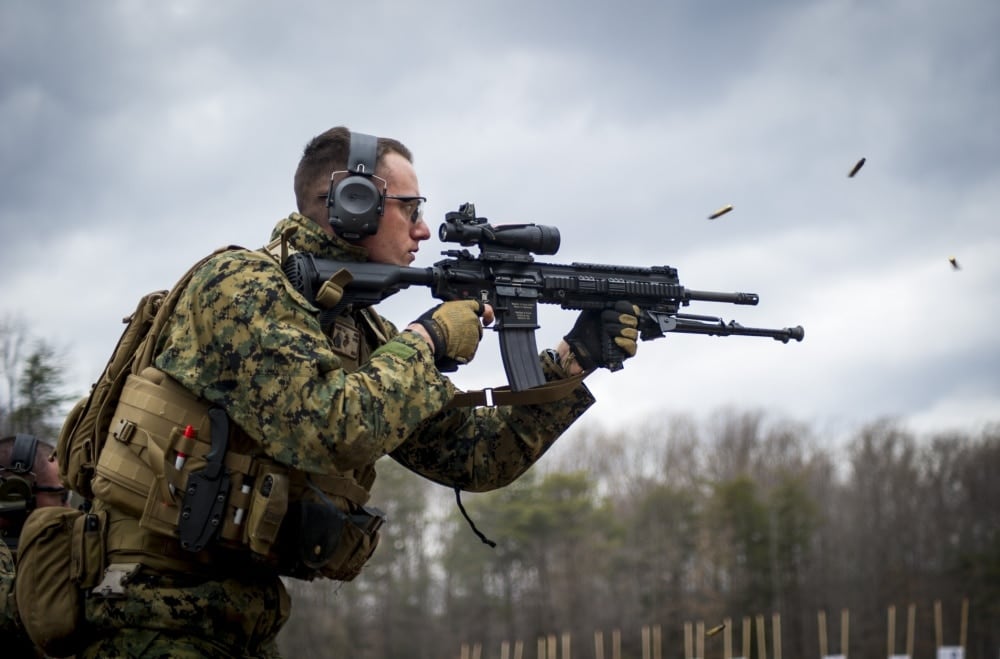The Marines are looking for a bullet that can punch through the advanced body armor that enemy fighters are wearing, Corps officials said.
"We're seeing more body armor wherever our Marines and soldiers deploy — more of it and better quality, or better capability," said Lt. Gen. Robert Walsh, head of Marine Corps Combat Development Command.
The Marine Corps is testing an Army bullet that is designed to penetrate body armor, Walsh told lawmakers on Tuesday. Both the Marines and Army are also looking at fielding a "higher caliber weapon," he said.
Walsh and Brig. Gen. Joseph Shrader, who leads Marine Corps Systems Command, both testified before the Senate Armed Services Seapower subcommittee.
Sen. Mike Rounds, R-S.D., asked both Walsh and Shrader how closely the Marine Corps is working with the Army to develop a bullet that can penetrate modern composite body armor amid concerns that the current 5.56 mm round is not strong enough to do so.
"The 5.56 round, we recognize there is a type of body armor it does not penetrate, and adversarial states are selling that stuff on the Internet for about $250," Army Chief of Staff Gen. Mark Milley told the full Senate Armed Services Committee on May 25.
Milley said that the Army believes it has a bullet that can penetrate new ballistic plates that are resistant to the 5.56 mm rounds used by soldiers and Marines.
"We think we have a solution," Milley said. "We know we have developed a bullet that can penetrate these new plates."
For more than a year, the Marine Corps has been testing the Army’s M885A1 Enhanced Performance Round, which is better at penetrating enemy armor, Walsh told lawmakers on Tuesday.
"In fact, right now our Marines are deployed into Afghanistan with our weapons are using the Army round," Walsh said.
The Marine Corps’ testing on the M885A1 round is expected to be completed next month, Shrader said. One drawback to the Army’s bullet is it "causes some durability issues" for the Marine Corps’ M27 Infantry Automatic Rifle, he said.
Marine Commandant Gen. Robert Neller is considering whether to issue infantry automatic rifles to nearly every 0311 infantrymen in rifle squads.
First fielded in 2010, the Corps’ IAR is currently the M27 made by Heckler & Koch, but the Marine Corps has asked other firearms manufacturers if they have weapons that meet the IARs requirements, and if so, how expensive it would be and how long it would take to produce 11,000 rifles.
The Marines are also working with U.S. Special Operations Command to develop a higher caliber round to defeat enemy body armor, Shrader said.
"As late as last week, there was a limited technical demonstration that was done with SOCOM on a higher caliber round, specifically for their sniper rifles suite that we're working with on them that could potentially address that," Shrader said. "So we're very in tune with that and we do understand that's that a capability we need to pay attention to."




